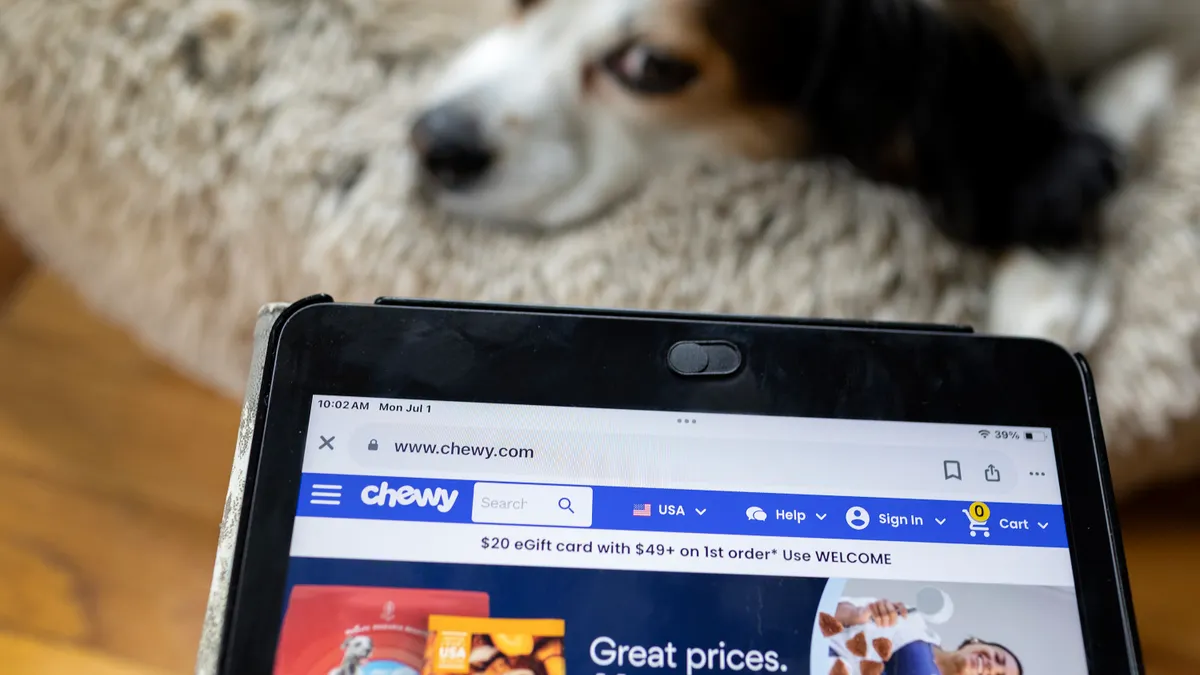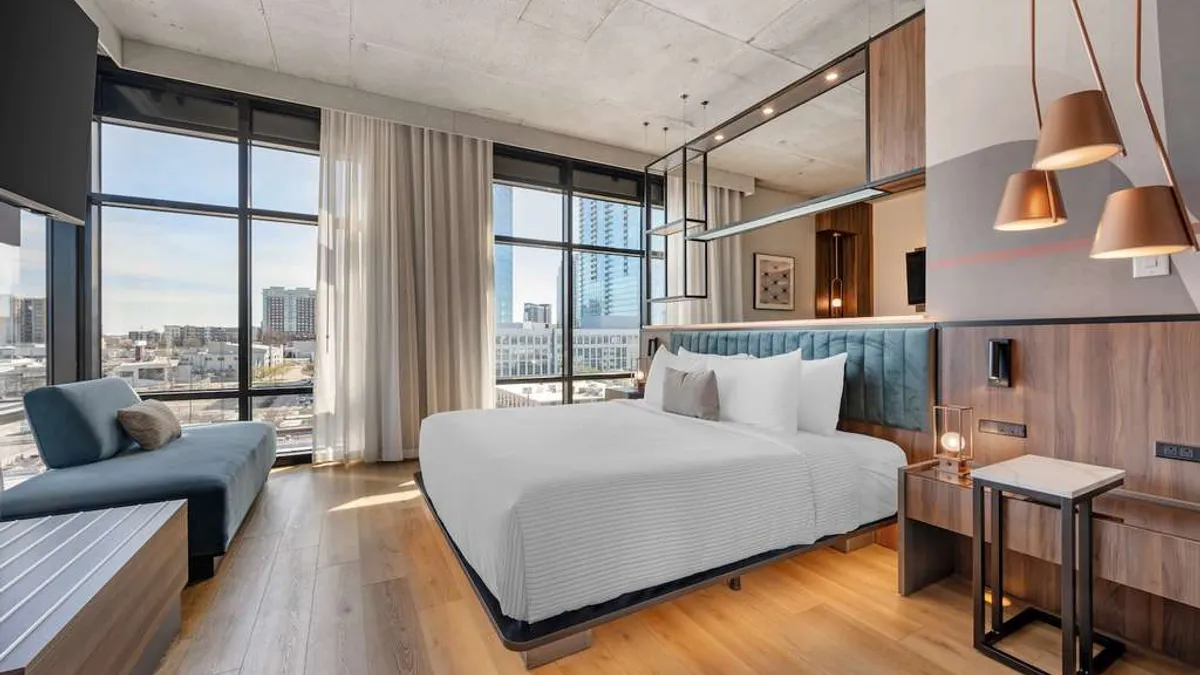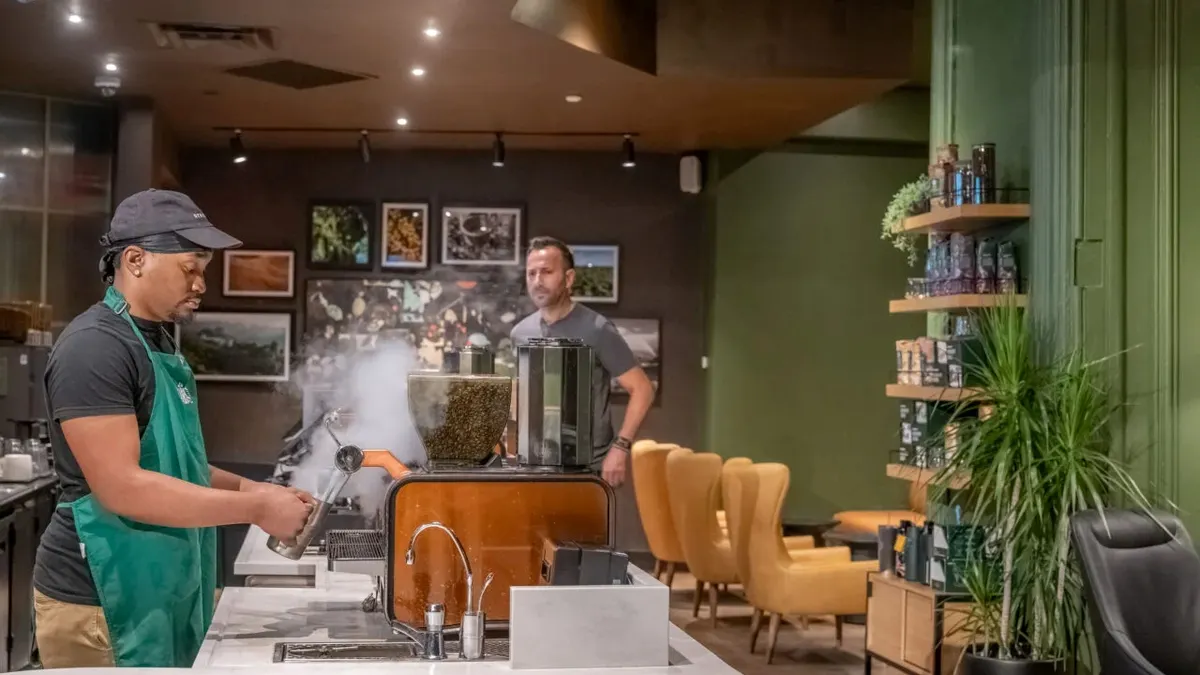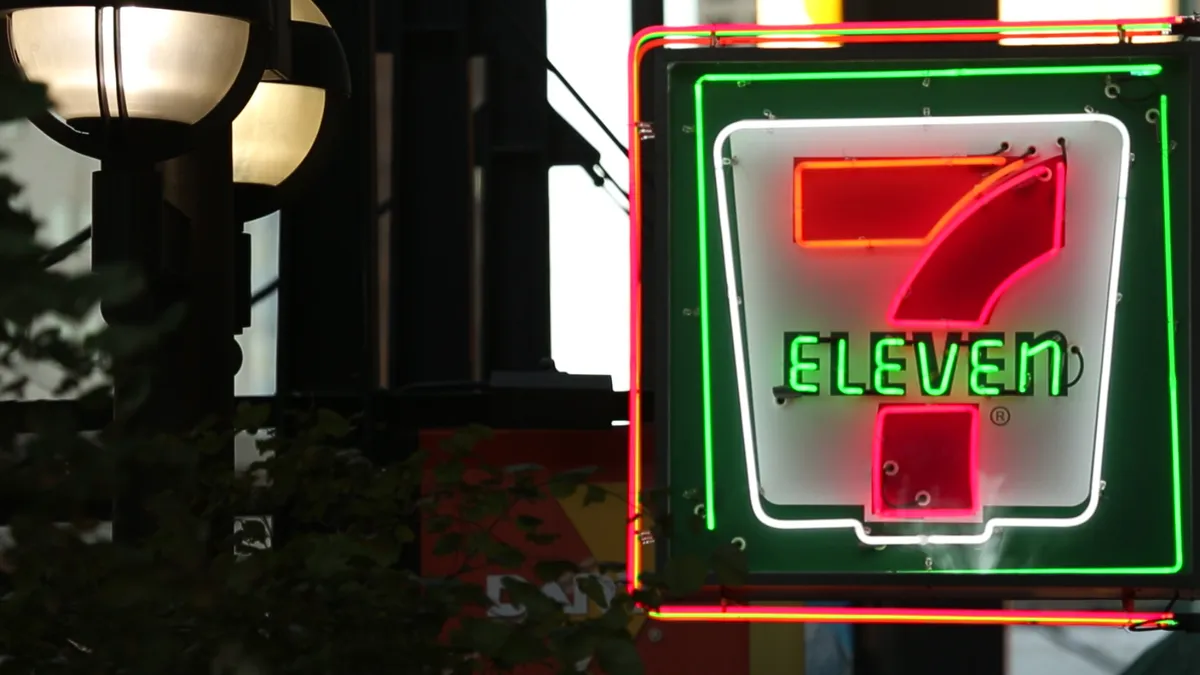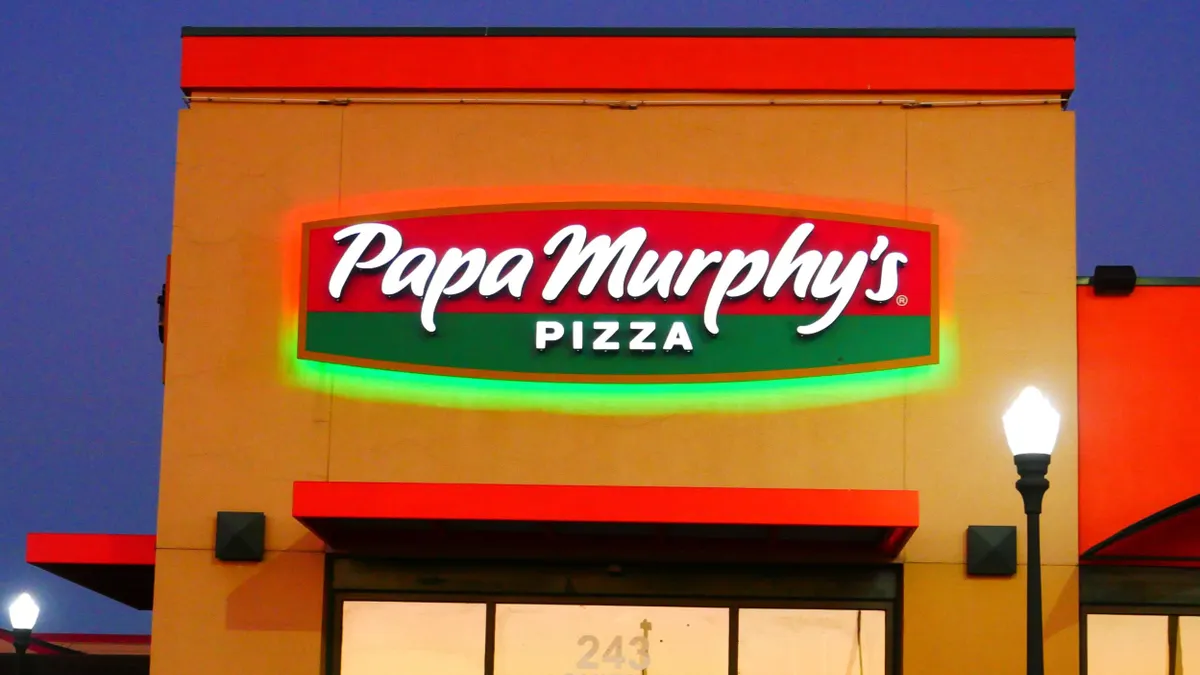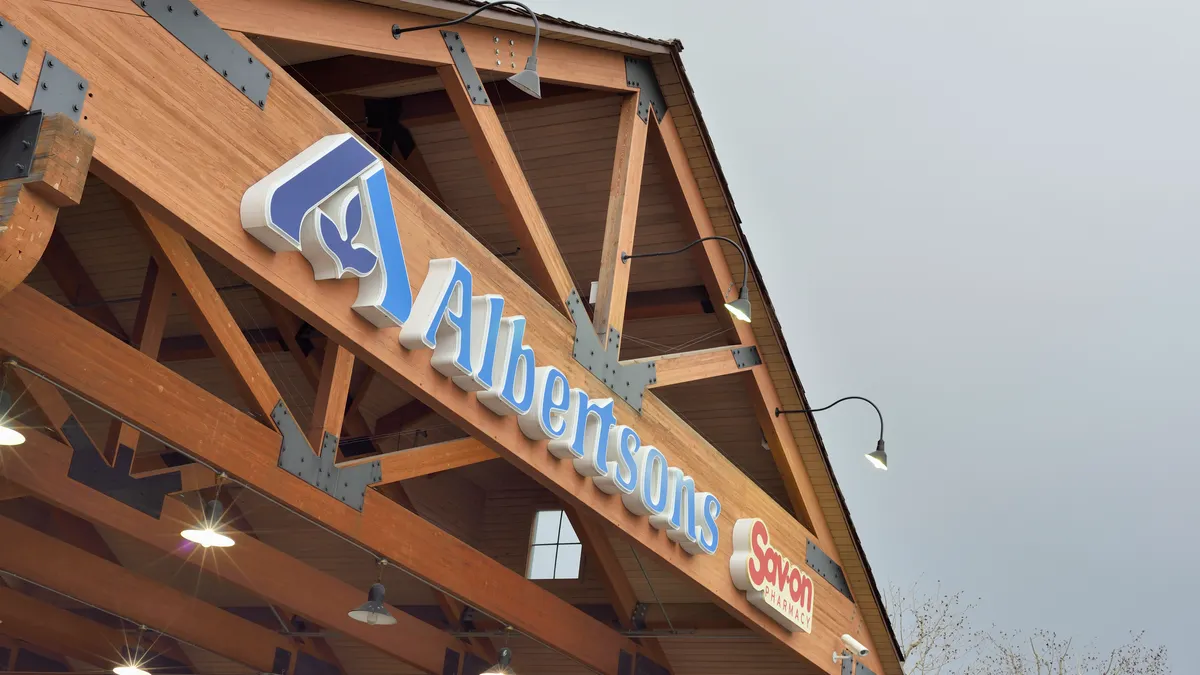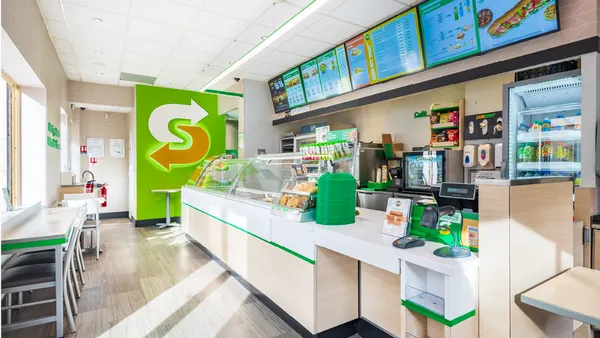For ButcherBox, the company’s unique identity is an essential ingredient of its loyalty program.
Savings are a starting point, but encouraging engagement requires companies to go beyond the basics, according to Reba Hatcher, chief commercial officer at ButcherBox. A strong loyalty program also has the essence of what attracted customers to the brand in the first place.
“The table stakes, if you will excuse the pun there, are offering points back,” Hatcher told CX Dive. “That is just a loyalty program. Nothing about that makes ButcherBox stand out, and nothing about that makes our program special. You can go to another company and get your 2% back.”
For ButcherBox, which specializes in meat delivery subscriptions, transparency is a key part of the company’s flavor — and therefore an important element of Sizzle Society, the loyalty program it launched last October. Every member earns the equivalent of 2% back with each purchase, but the benefits are designed to go much further.
Customers expect high-quality meat in their orders, which means they want insight into the supply chain, according to Hatcher. They also appreciate opportunities to learn how to use the ingredients they have.
The three tiers of Sizzle Society put an increasing emphasis on experiential benefits. Base tier members can redeem points for credits, gain access to special deals and attend virtual cooking classes, while higher tier members get perks including priority support and access to virtual Q&As with the company’s farmers, hosted by founder and CEO Mike Salguero.
“It's been great to allow them that look behind the curtain, because I think that gets our customers to really understand the work that we do to offer them the product, and I think that's why they connected with the brand in the first place,” Hatcher said.
A 4-year journey of differentiation
ButcherBox’s loyalty program is designed around the fact that not all customers have the same needs, even within a subscription program.
The process of designing Sizzle Society started four years ago, when ButcherBox started breaking down its subscription membership into segments.
“We started to realize there was some fraying and were able to look at all of our, at the time, 300,000 members and say, ‘We're treating all of you the same, and that doesn't feel right, because obviously all of you have very different needs and things that you want out of the subscription,” Hatcher said.
ButcherBox started by dividing customers up by how often they order and how much they spend. Hatcher and her team then got the entire organization onboard with the loyalty plans as it began digging deeper into what spurred greater loyalty among each segment.
The result was a program with three tiers — Sous Chef, Head Chef and Executive Chef — designed to encourage customers to move up to higher levels while offering relevant rewards.
“Over time, we started to see we have these things that move customers into better buying patterns,” Hatcher said. “And now we feel ready to have a loyalty program, because we do understand how to move them, instead of just starting one without any understanding of what would move a customer to be a better customer.”
The right benefits for the right customer
Everyone who signs up for ButcherBox automatically becomes a Sizzle Society member, but not everyone wants the same benefits, according to Hatcher.
Transparency, whether into sourcing or quality, is a common theme among ButcherBox customers, but the amount they want can differ. ButcherBox aims to strike a balance by starting off simple and offering more educational opportunities for higher-tier Sizzle Society members.
“I think customers would tell you 10 times out of 10 they want transparency and want all the information, but they don't want to be inundated with it,” ButcherBox said.
When someone first considers joining ButcherBox, the company will share some pictures of the farms it sources from alongside a high-level introduction to the company, according to Hatcher. Starting a subscription is a big decision, so it’s safe to assume potential customers want some information, but the company doesn’t know how much.
As customers spend more time with ButcherBox, the company gets to know them better and their inclination to want to learn more, according to Hatcher.
An Executive Chef level member, who orders at least 11 boxes annually, is someone who feels attached to the company — and therefore more likely to be interested in communications from Saluguero and the company’s suppliers, according to Hatcher.
The company also found that while a Sous Chef level member, who orders one to three boxes annually, may appreciate ButcherBox’s social and environmental efforts, they are less likely to sit in for a fireside chat with Salguero.
Creating excitement, not confusion
Excitement is important for even the lowest levels of a loyalty program even if they don’t need insider access to events.
After ButcherBox divided customers into segments and determined their loyalty needs, the company had an internal lexicon to describe them, according to Hatcher.
However, ButcherBox needed to translate its ideas into benefits that would excite customers without confusing them, according to Hatcher. An overengineered loyalty program can make it hard for newcomers to understand the perks and even how the tiers work.
“We didn't want to build in all these bells and whistles,” Hatcher said. “I think that's a trap of loyalty programs. You can go to a lot of loyalty programs websites, and then you see pages and pages and pages of benefits. I don't know if people actually want that.”
ButcherBox avoided this problem by focusing on benefits its customers already showed interest in, according to Hatcher.
At the two higher tiers, this includes the ability to swap out the free bonus protein customers receive in every box. The choice is usually locked in for a year, Head Chef members can change it once per year, while Executive Chefs can do so three times annually.
“They had been asking us, ‘Can I swap the offer?’” Hatcher said. “And we said, ‘Sure, that's fair enough. Let's build that in.’”
Building loyalty for the long term
ButcherBox was also careful to stay away from making offers that would be unsustainable in the long term, according to Hatcher. If customers enjoy a benefit, but it’s costing the business more than anticipated, it becomes difficult to take it away without upsetting the most loyal shoppers.
Experiential benefits, like priority support and Q&As with the CEO, help ensure Sizzle Society stays profitable.
The cost of offering the most valuable customers extra assistance is low, and Salguero lets ButcherBox film the Q&As in his home, according to Hatcher. This helps build engagement with relevant customers through a low-cost, high-quality value proposition that helps Sizzle Society prove its value to the bottom line.
“I think it's finding those intangibles that sometimes we discount — how much we know or love about our brand — and bringing those to consumers,” Hatcher said. “And I think that's how you can eventually get to the point where it's easier to map on incrementality.”








